
An electromagnetic coil is an electrical conductor such as a wire in the shape of a coil. Electromagnetic coils are used in electrical engineering, in applications where electric currents interact with magnetic fields, in devices such as electric motors, generators, inductors, electromagnets, transformers, and sensor coils. Either an electric current is passed through the wire of the coil to generate a magnetic field, or conversely, an external time-varying magnetic field through the interior of the coil generates an EMF (voltage) in the conductor.

A transformer is a passive component that transfers electrical energy from one electrical circuit to another circuit, or multiple circuits. A varying current in any coil of the transformer produces a varying magnetic flux in the transformer's core, which induces a varying electromotive force (EMF) across any other coils wound around the same core. Electrical energy can be transferred between separate coils without a metallic (conductive) connection between the two circuits. Faraday's law of induction, discovered in 1831, describes the induced voltage effect in any coil due to a changing magnetic flux encircled by the coil.

A Tesla coil is an electrical resonant transformer circuit designed by inventor Nikola Tesla in 1891. It is used to produce high-voltage, low-current, high-frequency alternating-current electricity. Tesla experimented with a number of different configurations consisting of two, or sometimes three, coupled resonant electric circuits.
Timeline of electromagnetism and classical optics lists, within the history of electromagnetism, the associated theories, technology, and events.

In electricity generation, a generator is a device that converts motion-based power or fuel-based power into electric power for use in an external circuit. Sources of mechanical energy include steam turbines, gas turbines, water turbines, internal combustion engines, wind turbines and even hand cranks. The first electromagnetic generator, the Faraday disk, was invented in 1831 by British scientist Michael Faraday. Generators provide nearly all the power for electrical grids.

An alternator is an electrical generator that converts mechanical energy to electrical energy in the form of alternating current. For reasons of cost and simplicity, most alternators use a rotating magnetic field with a stationary armature. Occasionally, a linear alternator or a rotating armature with a stationary magnetic field is used. In principle, any AC electrical generator can be called an alternator, but usually the term refers to small rotating machines driven by automotive and other internal combustion engines.

An induction coil or "spark coil" is a type of electrical transformer used to produce high-voltage pulses from a low-voltage direct current (DC) supply. To create the flux changes necessary to induce voltage in the secondary coil, the direct current in the primary coil is repeatedly interrupted by a vibrating mechanical contact called an interrupter. Invented in 1836 by the Irish-Catholic priest Nicholas Callan, with additional research by Charles Grafton Page and others, the induction coil was the first type of transformer. It was widely used in x-ray machines, spark-gap radio transmitters, arc lighting and quack medical electrotherapy devices from the 1880s to the 1920s. Today its only common use is as the ignition coils in internal combustion engines and in physics education to demonstrate induction.

Nicholas Joseph Callan was an Irish Catholic priest and physicist. He was professor of natural philosophy at Maynooth College in County Kildare from 1834, and is best known for his work on the induction coil.

An Oudin coil, also called an Oudin oscillator or Oudin resonator, is a resonant transformer circuit that generates very high voltage, high frequency alternating current (AC) electricity at low current levels, used in the obsolete forms of electrotherapy around the turn of the 20th century. It is very similar to the Tesla coil, with the difference being that the Oudin coil was connected as an autotransformer. It was invented in 1893 by French physician Paul Marie Oudin as a modification of physician Jacques Arsene d'Arsonval's electrotherapy equipment and used in medical diathermy therapy as well as quack medicine until perhaps 1940. The high voltage output terminal of the coil was connected to an insulated handheld electrode which produced luminous brush discharges, which were applied to the patient's body to treat various medical conditions in electrotherapy.
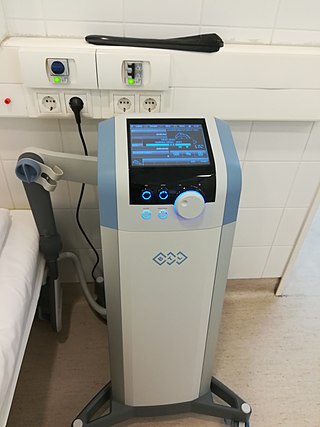
Electrotherapy is the use of electrical energy as a medical treatment. In medicine, the term electrotherapy can apply to a variety of treatments, including the use of electrical devices such as deep brain stimulators for neurological disease. The term has also been applied specifically to the use of electric current to speed wound healing. Additionally, the term "electrotherapy" or "electromagnetic therapy" has also been applied to a range of alternative medical devices and treatments.
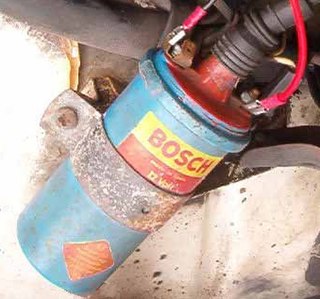
An ignition coil is used in the ignition system of a spark-ignition engine to transform the battery voltage to the much higher voltages required to operate the spark plug(s). The spark plugs then use this burst of high-voltage electricity to ignite the air-fuel mixture.
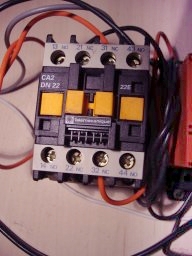
A contactor is an electrically controlled switch used for switching an electrical power circuit. A contactor is typically controlled by a circuit which has a much lower power level than the switched circuit, such as a 24-volt coil electromagnet controlling a 230-volt motor switch.

An AC motor is an electric motor driven by an alternating current (AC). The AC motor commonly consists of two basic parts, an outside stator having coils supplied with alternating current to produce a rotating magnetic field, and an inside rotor attached to the output shaft producing a second rotating magnetic field. The rotor magnetic field may be produced by permanent magnets, reluctance saliency, or DC or AC electrical windings.

A dynamo is an electrical generator that creates direct current using a commutator. Dynamos were the first electrical generators capable of delivering power for industry, and the foundation upon which many other later electric-power conversion devices were based, including the electric motor, the alternating-current alternator, and the rotary converter.

Henry Letheby was an English analytical chemist and public health officer.
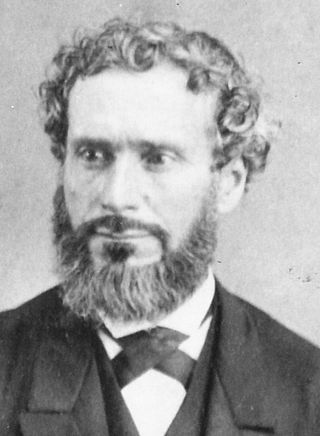
Charles Grafton Page was an American electrical experimenter and inventor, physician, patent examiner, patent advocate, and professor of chemistry.
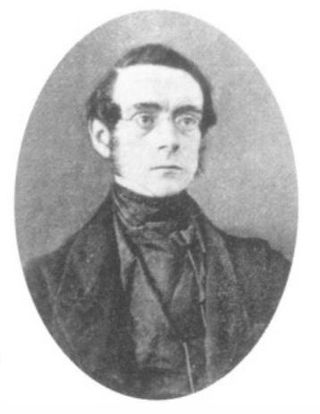
Golding Bird was a British medical doctor and a Fellow of the Royal College of Physicians. He became a great authority on kidney diseases and published a comprehensive paper on urinary deposits in 1844. He was also notable for his work in related sciences, especially the medical uses of electricity and electrochemistry. From 1836, he lectured at Guy's Hospital, a well-known teaching hospital in London and now part of King's College London, and published a popular textbook on science for medical students called Elements of Natural Philosophy.

The Pulvermacher chain, or in full as it was sold the Pulvermacher hydro-electric chain, was a type of voltaic battery sold in the second half of the 19th century for medical applications. Its chief market was amongst the numerous quack practitioners who were taking advantage of the popularity of the relatively new treatment of electrotherapy, or "electrification" as it was then known. Its unique selling point was its construction of numerous linked cells, rendering it mechanically flexible. A variant intended to be worn wrapped on parts of the body for long periods was known as Pulvermacher's galvanic chain or electric belt.
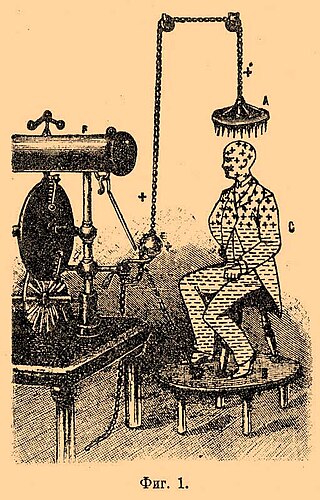
An electric bath is a 19th-century medical treatment in which high-voltage electrical apparatus was used for electrifying patients by causing an electric charge to build up on their bodies. In the US this process was known as Franklinization after Benjamin Franklin. The process became widely known after Franklin described it in the mid-18th century, but after that it was mostly practiced by quacks. Golding Bird brought it into the mainstream at Guy's Hospital in the mid-19th century and it fell into disuse in the early 20th century.

A trembler coil, buzz coil or vibrator coil is a type of high-voltage ignition coil used in the ignition system of early automobiles, most notably the Benz Patent-Motorwagen and the Ford Model T. Its distinguishing feature is a vibrating magnetically-activated contact called a trembler or interrupter, which breaks the primary current, generating multiple sparks during each cylinder's power stroke. Trembler coils were first used on the 1886 Benz automobile, and were used on the Model T until 1927.



















